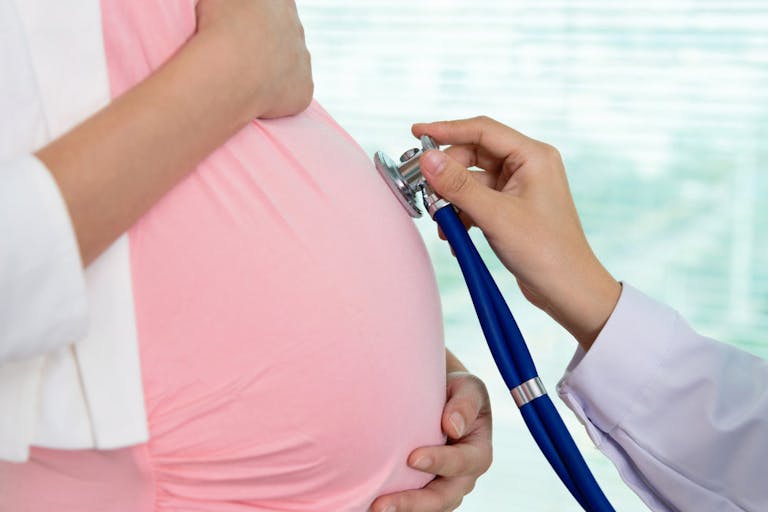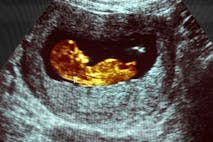
FACT CHECK: Are pro-life laws to blame for arrest of SC woman who delivered baby in a toilet?
Nancy Flanders
·
Guest Column·By Michael J. New
Lozier scholar says Texas Heartbeat Act has saved thousands of lives
(National Review) President Biden declared back in June that “Roe is on the ballot.” Indeed, on Election Day, numerous Republican governors who proudly signed strong pieces of pro-life legislation won reelection by large margins — despite facing well-financed opponents. These include Florida governor Ron DeSantis, Ohio governor Mike DeWine, Georgia governor Brian Kemp, and Texas governor Greg Abbott. But are these recently enacted pro-life laws actually saving lives?
New research says yes! My new Charlotte Lozier Institute analysis shows a historic increase in the number of children born in Texas. This demonstrates that the Texas Heartbeat Act has already saved thousands of lives.
Indeed, before the Dobbs decision, the September 1, 2021, enforcement of the Texas Heartbeat Act was a major victory for pro-lifers, marking the first time since Roe v. Wade that a law protecting pre-born children well before viability was allowed to take effect.
The Texas Heartbeat Act had an immediate short-term impact on the number of abortions performed in Texas. Data from the Texas Department of State Health Services indicate that between August 2021 and September 2021, the number of abortions performed in the Lone Star State declined by over 60 percent.
That said, the impact of the Texas Heartbeat Act on the overall incidence of abortion has been disputed. A March 2022 analysis that appeared in the Upshot section of the New York Times argued that the Texas Heartbeat Act was only having a marginal impact on the number of abortions performed on Texas women. Their analysis found that most of the in-state decline was offset by Texas women’s obtaining abortions in other states and an increase in online chemical-abortion-pill requests from the group Aid Access.
However, analyzing out-of-state abortion numbers and online requests for chemical-abortion pills is a methodologically problematic way to assess the impact of the Texas Heartbeat Act. The out-of-state abortion data were self-reported by abortion facilities. Hence, there is no way to verify the accuracy of these statistics. Additionally, some women who requested chemical-abortion pills online might have changed their minds about obtaining an abortion or might have wanted to have abortion pills available in the event of a future unplanned pregnancy.
Article continues below
Dear Reader,
In 2026, Live Action is heading straight where the battle is fiercest: college campuses.
We have a bold initiative to establish 100 Live Action campus chapters within the next year, and your partnership will make it a success!
Your support today will help train and equip young leaders, bring Live Action’s educational content into academic environments, host on-campus events and debates, and empower students to challenge the pro-abortion status quo with truth and compassion.
Invest in pro-life grassroots outreach and cultural formation with your TRIPLED year-end gift!
A more reliable method to gauge the impact of the Texas Heartbeat Act would be to analyze Texas birth data. If the Texas Heartbeat Act resulted in more pregnancies being carried to term, there would eventually be an increase in the Texas birthrate.
READ: Pro-life doctors refute ‘blatant misinformation’ on prenatal heartbeats
Indeed, that is exactly what my Charlotte Lozier Institute analysis of Texas birth data found. Centers for Disease Control data on the timing of abortions and length of pregnancies indicate the Texas Heartbeat Act would start having significant impact on the Texas birth rate in mid-March. With that in mind, I compared Texas births from March 2022 to July 2022 to Texas births from the same period from the past three years.
I found that between March 2022 and July 2022, more than 5,000 additional children were born in Texas. Overall, nearly half of the 10,000 abortion-vulnerable pre-born children who were protected by the Texas Heartbeat Act in its first five months were carried to term. While it is true that some women circumvented the law by obtaining abortions in other states, many other abortion-minded Texas women carried their children to term. These recent birth data from the Lone Star State provide a compelling statistical indication that the Texas Heartbeat Act has likely saved thousands of lives.
Previous analyses of birth data have demonstrated the effectiveness of other pro-life laws. Months after enforcement of parental-involvement laws in Massachusetts and Texas, separate academic studies both found a short-term increase in each state’s birth rate among minors. Additionally, separate studies have analyzed Medicaid programs in Texas, Ohio, and Illinois — each of which quit covering elective abortions at various points in the late 1970s. Each study found that in months after the policy change there was an increase in the state Medicaid birth rate. All of these studies provide strong statistical evidence that pregnancies are more likely to be carried to term after pro-life laws are enforced.
It should come as no surprise that organizations supporting legal abortion have argued that the Texas Heartbeat Act had only a marginal impact. Downplaying the effectiveness of pro-life laws has been a longtime strategy of supporters of legal abortion. However, there is a strong body of research that the incidence of abortion is sensitive to its legal status and that incremental pro-life laws lower abortion rates. Pro-lifers should continue to take advantage of this summer’s Dobbs ruling by pursuing additional opportunities to enact strong protections for the pre-born and their mothers in more states.
Editor’s Note: This article was originally published at National Review and is reprinted here with permission.

Live Action News is pro-life news and commentary from a pro-life perspective.
Contact editor@liveaction.org for questions, corrections, or if you are seeking permission to reprint any Live Action News content.
Guest Articles: To submit a guest article to Live Action News, email editor@liveaction.org with an attached Word document of 800-1000 words. Please also attach any photos relevant to your submission if applicable. If your submission is accepted for publication, you will be notified within three weeks. Guest articles are not compensated (see our Open License Agreement). Thank you for your interest in Live Action News!

Nancy Flanders
·
Issues
Wesley J. Smith
·
Issues
Michael J. New
·
Issues
Right to Life UK
·
Politics
Tabitha Goodling
·
Human Interest
Andrea Trudden
·
Issues
Michael J. New
·
Guest Column
Michael J. New
·
Guest Column
Michael J. New
·
Guest Column
Michael J. New
·
Guest Column
Michael J. New
·